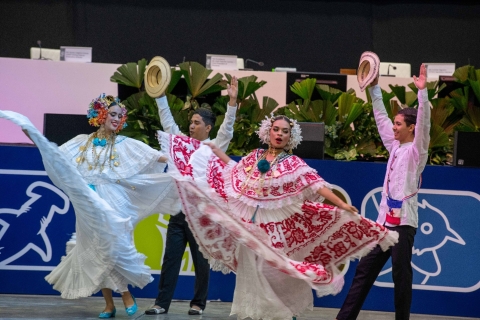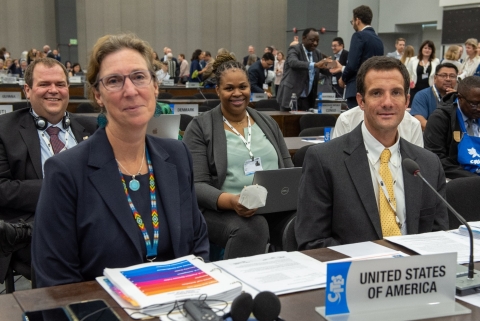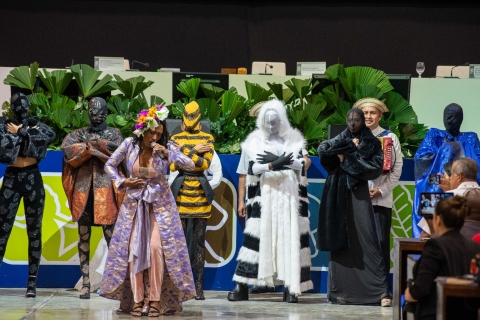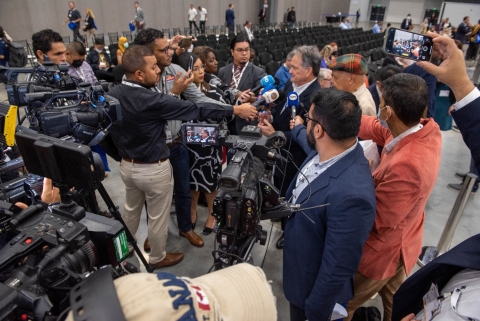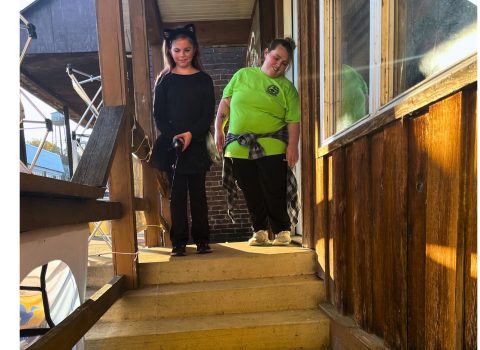November 14, 2022 marked the first day of the 19th meeting of the Conference of the Parties to the Convention on International Trade in Endangered Species of Wild Fauna and Flora (CITES CoP19) in Panama City, Panama. Over the next two weeks, 184 member Parties, including 183 countries and the European Union, will discuss and vote on a range of agenda items to improve the effectiveness of CITES, make changes to the inclusion of species in the CITES Appendices (see Box 1), and resolve policy and implementation issues relevant to trade and conservation of wildlife across the globe.
As the lead for CITES implementation in the United States, the U.S. Fish and Wildlife Service began preparing for CoP19 two years ago, initiating a robust public engagement process and culminating in the submission of 14 species proposals and six other documents we sponsored or co-sponsored for consideration by CITES Parties at the meeting. We considered all input as we evaluated all proposed agenda items and developed tentative negotiating positions on the full agenda of CoP19, including species proposals and other items submitted by other Parties, the permanent CITES committees, and the CITES Secretariat for consideration at CoP19.
Noteworthy at this CoP are the high number of native reptile species submitted for inclusion in one of the CITES Appendices, including several U.S. native freshwater turtles as well as the desert horned lizard and timber rattlesnake. Learn more about our Spotlight on Species to learn about these native reptiles and other species we’ll be discussing at CoP19.
Box 1. CITES Appendices Demystified: Appendix I includes species threatened with extinction and provides the greatest level of protection, including restrictions on commercial trade. Examples of species currently listed in Appendix I include great apes, sea turtles, most lady slipper orchids, and giant pandas. Appendix II includes species that, although not necessarily threatened with extinction, may become so without trade regulation. Most CITES-listed species are included in this Appendix, including American ginseng, paddlefish, American alligator, African lions, and many stony corals. Appendix III includes species protected by at least one country, which needs assistance from other Parties to regulate the legal trade. Examples of species currently listed in Appendix III include map turtles, walrus, and Cape stag beetles. |
Some of the other priority topics at CoP19 include the role of CITES in preventing future zoonotic disease outbreaks, engagement of indigenous peoples and local communities, wildlife crime on the internet, enforcement matters and disposal of confiscated specimens, and much more.
In addition to the agenda items outlined on the CITES webpage, the U.S. delegation, led by Deputy Assistant Secretary for Fish and Wildlife and Parks Matthew Strickler, will speak at a number of events, including:
Monday, November 14
- Deputy Assistant Secretary Strickler will deliver remarks at“Musical Instruments and CITES-Protected Materials” to showcase the collaboration between the Department and U.S. music stakeholders on initiatives related to the CITES Musical Instrument Certificate.
- The Service’s Director Martha Williams will participate in “Turtle Proposals at CoP19,” featuring speakers from different Party delegations who have submitted proposals to amend the inclusion of turtle species in CITES Appendices I and II at the meeting in order to build support for the proposals at CoP19.
- The Service’s Assistant Director for International Affairs Bryan Arroyo will participate in a panel discussion on “A Decade of the National Ivory Action Plan (NIAP) Process: Reviewing its Successes, Challenges and Looking Ahead.” This event will focus on successes and challenges and outline ideas to strengthen and enhance the NIAP process, including through a proposal submitted by the United States, Mali, and Senegal for consideration at CoP19.
Tuesday, November 15
- Assistant Director Arroyo will participate in a panel discussion on “Jaguars: Iconic Indicators of Biodiversity A Roadmap for Conserving Latin America’s Biggest Cat to Benefit People and the Planet” to bolster ongoing and expand conservation efforts for this iconic umbrella species that, given its habitat needs, benefits a plethora of other species.
- Director Williams will participate in “Meeting the Moment: The Biodiversity Crisis and CITES" toexplore the Treaty in the context of the biodiversity crisis and the exploitation driver of species loss.
Wednesday, November 16
- Deputy Assistant Secretary Strickler will deliver remarks at “There is Still Hope: CITES’ Role in Stopping Illegal Fishing and Saving the Vaquita” to encourage CITES Parties to support heavier enforcement of the gillnet ban and illegal fishing prohibitions to save the vaquita, the world’s most critically endangered marine mammal with fewer than 10 individuals remaining.
Wednesday, November 23
- The Service’s Chief of Management Authority Naimah Aziz will participate in an event on “Disposition of Confiscated Live Animals: Capacity Development and Best Practices” to share best practices, resources, and examples of tools to help manage and care for live animals seized in trade.
The next two weeks will be filled with discussions and decisions that will help shape the future for wildlife. Be sure to visit our CoP19 webpage for further updates!


